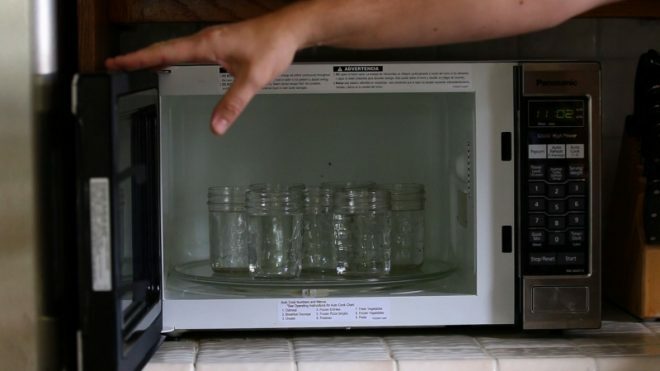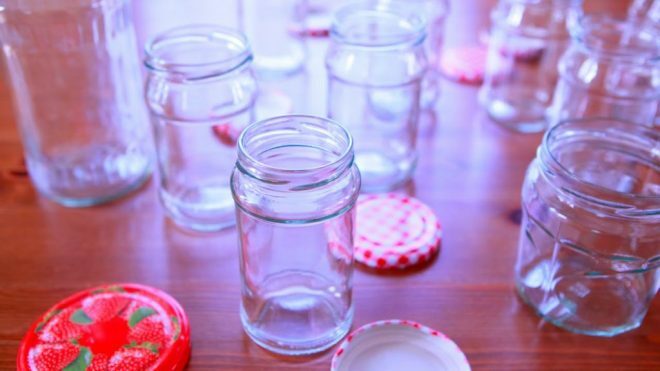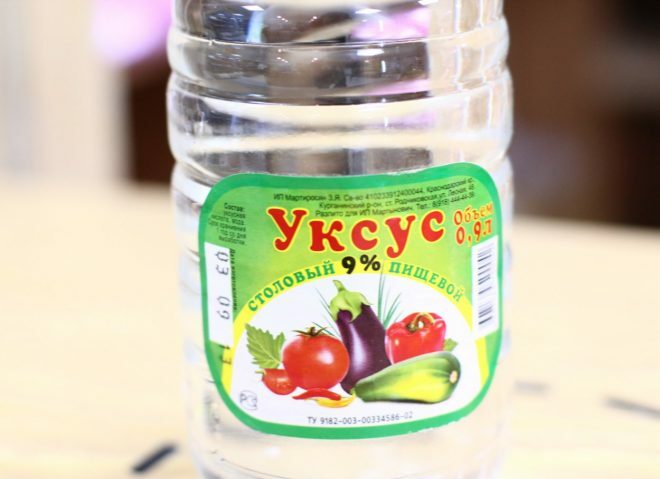Harvesting homemade pickles, compotes, jams and salads is a rather laborious job. After all, it is necessary to process not only the products themselves, but also to disinfect the containers for the complete destruction of all microbes. Many housewives put jars in a large container with boiling water, some wash with soap and dry in the oven. However, the fastest and most effective way is to sterilize cans in the microwave. The most important thing is to know how to properly organize this process.

Why sterilize before canning
Disinfection of glass containers for future workpieces is a very important point when preserving products. Indeed, in poorly processed jars, dangerous pathogenic microbes accumulate, which can cause acute infectious diseases in humans, the most dangerous of which is botulism.
Attention! Earned on our website kitchen designer. You can familiarize yourself with it and design your dream kitchen for free! May also come in handy wardrobes designer.
Therefore, even with the most careful processing of containers with plain water and detergents, you cannot get rid of harmful microorganisms. Even the cleanest dishware contains some pathogens. These pathogenic bacteria, which subsequently end up in rolled up cans, begin to actively multiply and create a special toxic environment, very dangerous both for the product itself and for health person.
Microwave sterilization of containers will be the simplest and most reliable method of preserving the quality of harvested conservation.
Preparation for processing
Before sterilizing cans in microwave ovens, you must:
- Thoroughly inspect each container for cracks and cracks. After all, if you place damaged dishes in the unit, then during processing under the influence of heat waves, it will simply crack and split into small parts.
- After inspection, the container must be rinsed with water with the addition of baking soda or soda ash and rinsed well under the tap.
How to sterilize jars in the microwave
To know how to properly sterilize jars in the microwave, you need to familiarize yourself with some rules:
- Be sure to check the vessel for integrity.
- Large three-liter bottles should be placed in the microwave oven in the supine position with a small amount of water added inside them.
- Never put containers with metal or plastic lids into the unit.
Steam treatment
Fast sterilization of cans in the microwave takes place with the help of water poured into the container. For this, even an ordinary tap is suitable, which, when evaporated, will serve as an excellent disinfectant. Carry out the following actions:
- It is necessary to pour about 50-70 ml into each jar, determine it in a microwave and set a timer for a few minutes. It must be remembered that the more containers are placed in the unit, the longer processing must take place.
- Next, you should monitor the liquid in the banks. Evaporating, it will spray the entire inner surfaces and the vessels themselves with steam, thereby neutralizing all harmful microbes. As soon as the water has boiled away by one third, turn off the oven, leaving the container there for a few more minutes.
- You need to take out the processed dishes using some kind of grip. If there is residual water, get rid of them and immediately start filling the containers with the harvested product.
Dry processing
And how to sterilize jars in the microwave, empty and without water? In cases where, for home canning, the vessel must be absolutely dry, then the following method can be applied:
- Before sterilizing cans in microwave, rinse and dry well.
- Determine the jars in the oven by placing one next to it, with half full of water.
- After turning on the unit, carefully observe the condition of the filled can. After complete evaporation of water in it, turn off the oven, and remove the container after 5-6 minutes.
- After the jars are removed, immediately start filling them with vegetables or fruits.
Processing with workpieces
Is it possible to sterilize jars in the microwave immediately with the products in it? Yes. And, besides, this method is most popular with housewives. After all, such a process saves such precious time, which is so lacking in the summer. So, for example:
- Vegetable salads harvested for the winter definitely need pasteurization. And this procedure can be done wonderfully in a microwave oven. After all, the heat waves of the device penetrate deep into the product only 2.5 centimeters, increasing the temperature in this interval to +90 - +100 degrees. The rest of the product mass inside the jar will have a temperature of about +60 - +80 degrees. And these parameters are ideal for supporting the pasteurization process, which has the properties of protecting substances from the development of negative microorganisms.
- Jams and preserves from the microwave are also excellent. In jars filled with sugar and fruits, you need to leave some space from the top. This is done so that when boiling, the liquid does not stain the inner surface. The containers with jam should be placed so that during sterilization they would not be able to touch each other. Next, turn on the timer for 8-10 minutes, and then bring the microwave back to work for 9 minutes. The procedure is carried out 2-3 times.
- Compotes with pre-prepared concentrated sugar solution. A very simple procedure. How much to sterilize jars in the microwave during the preparation of compote depends on the amount of raw berries or fruits placed in them. So, for example, a half-liter container filled with a product must be disinfected at full intensity of the unit for 6-8 minutes. After the processing process, the containers are taken out of the unit and filled with hot syrup.
Advantages and disadvantages of the method
Sterilizing dishes in a microwave unit has both pros and cons. The advantages of this method are:
- Faster preparation of containers compared to traditional cooking in a saucepan. All actions take place in just a few minutes;
- Preparing containers for homemade products is possible not one at a time, but at once in batches of several cans. This speeds up the work of the hostess;
- The humidity level in the kitchen area remains normal.
However, with all its advantages, this method of sterilization is inconvenient in that the lids on the dishes have to be processed separately, which is not very handy.
Video: how to properly sterilize jars
Do you know what a kitchen apron is?
Kitchen cabinet facades
9.78%
Apron hanging on a hook next to the sink
15.11%
Wall between the bottom edge of the wall cabinets and the worktop
75.11%
Voted: 225
average rating 0 / 5. Number of ratings: 0
No ratings yet. Be the first to rate.




